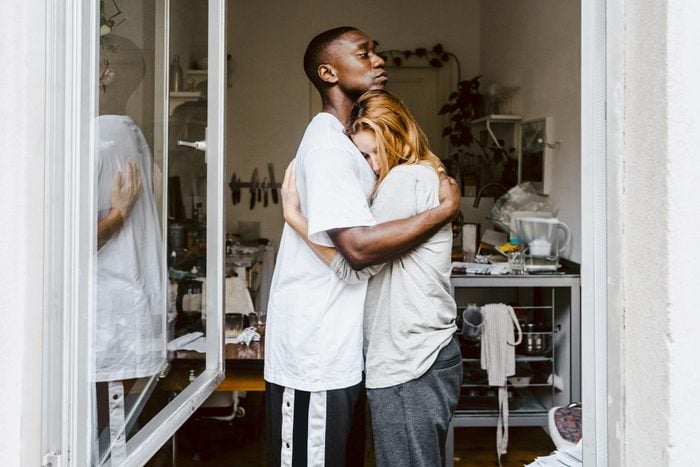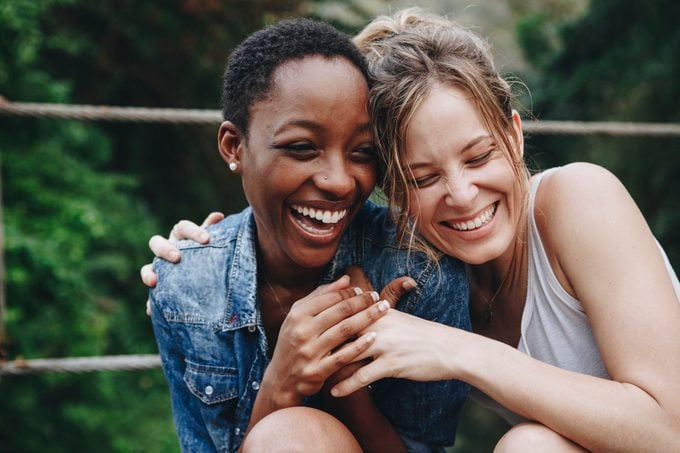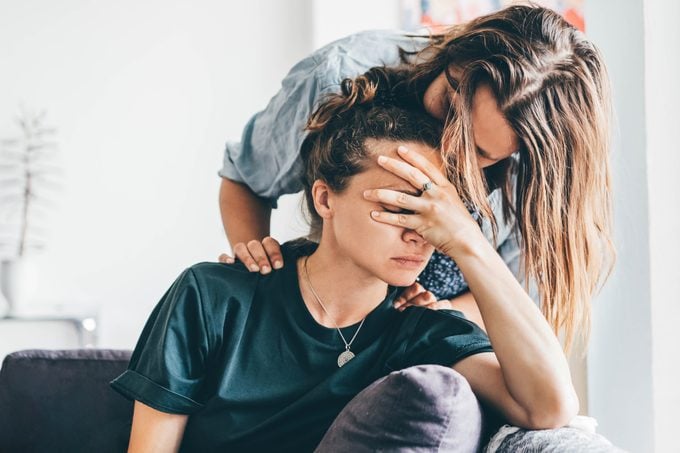Relationship Attachment Style: 9 Questions to Help Identify Yours
Updated: Jan. 17, 2023

Determine which attachment style is yours, with psychologists' insights on how it formed in your earlier years.
You’ve probably heard of nature versus nurture: the centuries-long scientific debate over which parts of our identities are influenced by genetics, experiences, or some combination. Modern research tells us there is overwhelming evidence that both play a vital role in who we become. One landmark 2019 study that involved more than 14.5 million pairs of twins found a remarkably even split—suggesting that on average, we’re 49% a product of our genetics and 51% formed by our experiences.
Still, one or the other may more significantly affect certain parts of our lives. For example, the study found that the risk for some mental disorders is about 70% genetic, while experts say our upbringing plays a principal role in a crucial part of our lives: our patterns for forming and navigating our relationships—which is often referred to as one’s “attachment style.”
The 3 Words You Need for Any Conflict, Says a Psychologist Who’s a Holocaust Survivor
What is the theory of attachment styles?
In their relationships, especially romantic relationships, an individual might be naturally more trusting, or aloof, or jealous, or clingy…the list of adjectives varies from person to person and can go on and on. These traits tend to govern our emotional bonds.
Tracy Vadakumchery, LMHC, a psychotherapist licensed in New York and Florida, says this typically stems from how we interacted with our primary caregiver when we were children, which is an experience that sets the foundation for how we approach future relationships. These behaviors aren’t just limited to romantic partnerships, she says, but can extend to our relationships with work, friends, food, exercise, money, and other forms of self-care.
16 Things to Know About Attachment Theory
The four attachment styles
No two people have the exact same set of experiences, but researchers have honed in on four main attachment style brackets:
Secure attachment style

People with a secure attachment style tend to be self-contented, social, and open in their communication. Says Lauren Cook-Mckay, licensed therapist and vice president of marketing at Divorce Answers: “You’ll know you have a secure attachment style when you’re honest and trusting with your partner, able to openly communicate your hopes, needs, and feelings, comfortable being yourself around them and don’t experience separation anxiety when your partner is away.”
This style tends to form from dependable caregivers who did an effective job at meeting your needs and made you feel emotionally safe growing up, she explains. It’s the ideal when it comes to our adult relationships. According to research published in 2018, it’s also the most common—66% of the population identifies as having a secure attachment style.
Vanessa Lachey Gets Candid about Her Longtime Health Struggle…and the #1 Key to Her Marriage
Anxious-ambivalent attachment style

Also called an insecure-anxious attachment, Cook-McKay says that people with this style tend to be at high risk of being dependent on the partner, “as they’re overly fixated on the relationship, constantly worried about how much their partner loves them, and require nonstop attention and reassurance.” This behavior often emerges from their parents being inconsistent with meeting their needs during childhood, she explains.
How to Use the 5 Love Languages, According to Therapists
Insecure-avoidant attachment style

This style is common among adults whose emotional needs were neglected during childhood. “They are likely to be distant from their partners—as this is their go-to response in distress to self-soothe, the only way they know how to cope with the challenges within the relationship,” she says. “They equate intimacy with losing their independence, so they struggle letting people in and depending on them.”
What Is a Toxic Relationship? What Therapists Need You to Know
Disorganized attachment style

This form of attachment style tends to emerge from life-altering childhood traumas. “This behavioral pattern causes one to have negative views of others, which reflects the negative bond they had with their caregivers,” Cook-McKay says. “People with this attachment style are hyper-independent due to not being able to trust others, have difficulty regulating their emotions, and feel unworthy of love—which causes them to enter dysfunctional relationships.”
Are You Self-Sabotaging Relationships? Here’s What to Do
How can you recognize attachment styles?
It’s valuable to understand which attachment style you lean toward, Vadakumchery explains. “Recognizing attachment styles can influence healthier relationships because it teaches you how to be proactive about your anxiety and decrease anxiety-driven behaviors,” she says. “If you want to have a healthier relationship in 2023, it’s important to recognize the patterns you’ve had in prior relationships. If it’s a pattern, it’s a problem.”
Vadakumchery says to honestly consider a few questions to learn more about your attachment style:
- When things get serious, how do I respond? What actions do I take? What is my impulse reaction?
- When I’m afraid of losing someone or something, how do I respond? What actions do I take? What is my impulse reaction?
- When conflict happens in my relationships, what do I fear? What am I scared of? What do I think will happen?
“If your answer to some or all of these questions is, ‘It depends’, or something along the lines of that, then that’s also indicative of a pattern,” she says. Our attachment style can change depending on the situation, too. “I work with South Asian American millennials who struggle with their own attachment styles, and their attachment styles can vary—believe it or not—depending on the age, status, skin color, or race of the person they are interacting with.”
5 Factors Linked to Successful Relationships, According to Science
Can you change your attachment style?
Our need for social connection is hardwired into our DNA—but our attachment styles are not necessarily fixed. To some degree, attachment styles can evolve positively, particularly if we are open to developing relationships with people who exhibit secure attachment behaviors.
People Who Did This One Thing at Age 50 Were the Healthiest at Age 80
Still, while unmet needs from childhood are very much rooted in our brains—and reflected in our actions today—we can shift their power over us as adults. It comes down to identifying your personal needs, learning how to fulfill them now as an adult, and disconnecting them from how you define yourself, Cook-McKay says. “Having a better grasp of your emotions and knowing who you really are and what you need affords you an attachment style that’s no longer driven by your traumas.”
This can be a complex process, however. Vadakumchery advises that if you’re struggling to work toward a more secure attachment style, a trained mental health professional can help you highlight the blind spots in your current style and offer the right tools to combat ingrained patterns.
